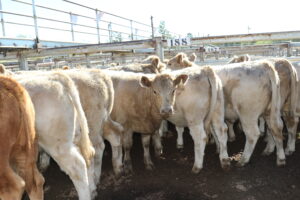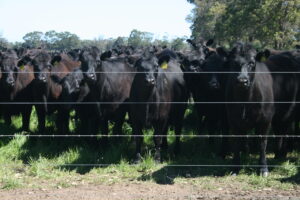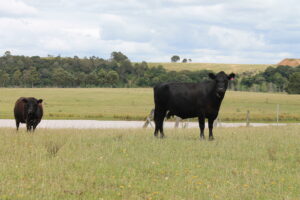The latest Australian Bureau of Statistics (ABS) slaughter and beef production data was released a couple of weeks ago. Last week Mecardo looked at female slaughter rates for the March quarter, this week we take a deeper look at the data in search of trends.
The headline total cattle slaughter number was 1.69 million head. Figure 1 shows this was a significant lift on the lows of 2022, up 15%, and on the December quarter, up 5%. However, historical cattle slaughter numbers were relatively low. Compared to the five-year average March total slaughter was down 9%.
There have been three years out of the last 10 when cattle slaughter in the March quarter has been above 2 million head. We can see that in March we were still a long way from peaks.
We know from looking at the female slaughter rate last week that the number of cows and heifers heading over the hooks is still down. Figure 2 shows that female slaughter was up 6% on the December quarter and a very strong 20% on March 2022. Despite the increase in female slaughter, it was still 20% below the five-year average, which is around the level of a static herd.
Lower first-quarter female slaughter is likely part of the reason prices are in decline now. Autumn is traditionally a strong period for female slaughter, and this year the quarterly lift might be stronger than normal.
Male cattle slaughter rates for the March quarter give a pointer to where we are headed with cattle supply. Figure 3 shows bull, steer and bullock slaughter was up 5% on the December quarter and 12% on March 2023.
Male cattle slaughter managed to surpass the five-year average and it was the strongest quarterly slaughter since March 2020. The slaughter of male cattle is much less variable than females and is a good indicator of how the herd is tracking. The slaughter rates of male cattle have been climbing since March 2020. With females still being retained male slaughter will continue to grow, and is likely headed towards 1 million head per quarter in the coming years.
What does it mean?
Meat and Livestock Australia’s projections forecast cattle slaughter of 6.625 million head in 2023. With 1.54 million heads exiting in the first quarter, we’ll have to see 1.69 million heads per quarter processed for the rest of the year. This is 10% more than the first quarter.
Such a lift in supply will generally see prices fall as processors adjust slaughter capacity, and that is what we are seeing now. Cattle supply is going to be stronger, the level of price depends on demand.
Have any questions or comments?
Key Points
- March quarter cattle slaughter was up strongly on last year, but female slaughter is still well down on last year.
- Male cattle slaughter is back at the five-year average and will continue to grow.
- Cattle supply is going to be stronger, increased demand is required to boost prices.
Click on figure to expand
Click on figure to expand
Click on figure to expand
Data sources: ABS, MLA, Mecardo















